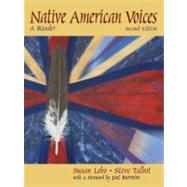
| Foreword | viii | ||||
|
|||||
| Preface | xi | ||||
| About The Editors | xiv | ||||
| About The Artists | xv | ||||
| PART I: Peoples and Nations: Following in the Footsteps of the Ancestors | 1 | (68) | |||
|
13 | (18) | |||
|
|||||
|
29 | (2) | |||
|
|||||
|
|||||
|
31 | (17) | |||
|
|||||
|
48 | (8) | |||
|
|||||
|
53 | (3) | |||
|
56 | (13) | |||
|
|||||
|
66 | (3) | |||
| PART II: The Hidden Heritage | 69 | (343) | |||
|
74 | (1) | |||
|
|||||
|
75 | (9) | |||
|
|||||
|
83 | (1) | |||
|
|||||
|
84 | (285) | |||
|
|||||
|
|||||
|
95 | (274) | |||
|
|||||
|
369 | (8) | |||
|
|||||
|
377 | (11) | |||
|
|||||
|
388 | (5) | |||
|
392 | (1) | |||
|
393 | (8) | |||
|
|||||
|
401 | (11) | |||
|
|||||
|
410 | (2) | |||
| PART VIII: Community Well-Being: Health, Welfare, Justice | 412 | (54) | |||
|
420 | (8) | |||
|
|||||
|
428 | (8) | |||
|
|||||
|
434 | (2) | |||
|
436 | (11) | |||
|
|||||
|
447 | (8) | |||
|
|||||
|
454 | (1) | |||
|
|||||
|
455 | (11) | |||
|
|||||
|
464 | (2) | |||
| PART IX: Native American Rights, Struggle, and Revitalization | 466 | (88) | |||
|
477 | (10) | |||
|
|||||
|
480 | (4) | |||
|
|||||
|
484 | (2) | |||
|
|||||
|
486 | (1) | |||
|
487 | (20) | |||
|
|||||
|
|||||
|
503 | (4) | |||
|
|||||
|
507 | (13) | |||
|
|||||
|
518 | (1) | |||
|
|||||
|
519 | (1) | |||
|
520 | (13) | |||
|
|||||
|
532 | (1) | |||
|
533 | (11) | |||
|
|||||
|
544 | (10) | |||
|
548 | (1) | |||
|
|||||
|
549 | (5) | |||
|
|||||
|
551 | (3) | |||
| Appendix A: Native Media | 554 | (2) | |||
| Appendix B: Indigenous Peoples' Organizations | 556 | (2) | |||
| Appendix C: Native American Studies Programs In The United States And Canada | 558 | (1) | |||
| Appendix D: American Indian Higher Education Consortium | 559 | (2) | |||
| Credits | 561 | (2) | |||
| Index | 563 |
The New copy of this book will include any supplemental materials advertised. Please check the title of the book to determine if it should include any access cards, study guides, lab manuals, CDs, etc.
The Used, Rental and eBook copies of this book are not guaranteed to include any supplemental materials. Typically, only the book itself is included. This is true even if the title states it includes any access cards, study guides, lab manuals, CDs, etc.